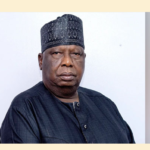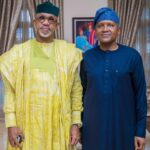Olusegun Ariyo
The Inspector-General of Police, Olukayode Egbetokun, has directed organisation utilizing Supernumerary Police, SPY, personnel to heed to the new standardised uniforms of the officers.
Egbetokun gave the directive on Tuesday in Abuja at the inauguration of the new standard Supernumerary Police uniforms.
“As we relaunch these uniforms and kits, we mandate all organisations utilising SPY Police personnel to strictly adhere to these new standardised uniforms.
“The Force Quartermaster and personnel across the states will provide guidance on the registration and acquisition.
“All Police Training Schools are instructed to adopt the new uniform issuance model for SPY Police personnel,” he said.
He said the Nigeria Police Force was actively taking measures to prevent the unauthorised production and distribution of police uniforms, including the SPY uniform.
Represented by the Deputy Inspector-General of Police in charge of Administration and Finance, Mr Bala Ciroma, the IGP said the inauguration of the newly approved standardised SPY police uniforms and kits was a significant milestone and a crucial step to enhance professionalism and visibility of the officers.
He said, Section 21(7) of the Nigeria Police Act 2020 (as amended) formally establishes the Supernumerary Police as an integral unit within the Nigeria Police Force.
“The Act further defines their powers, privileges, and functions, as well as their supervision by the Nigeria Police Force, including their uniforms and accoutrements, thereby ensuring a standardised visual identity.
“Pursuant to Section 21 of the same Act, private organisations or government departments seeking to utilise the services of the officers for the protection of their owned or controlled properties may submit an application to the I-G.
“In spite of being an essential and desirable component of the force, the SPY Unit has faced difficulties in establishing a distinct identity,” he said.
According to him, attempts to create and enhance its identity had been significantly impeded by a lack of a standardised and distinctive uniform, which had persisted as a major obstacle.








